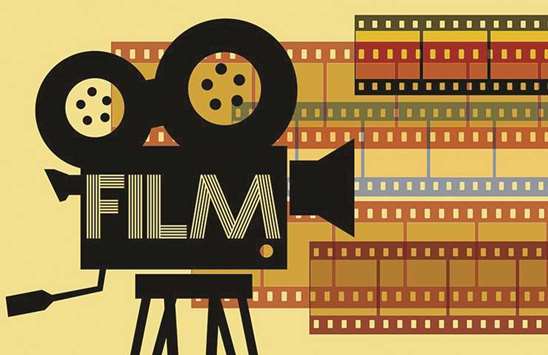At school in what was then Calcutta still flavoured with the colonial remnants, my idea of a pirate was Long John Silver in Robert Louis Stevenson’s gripping 1883 classic, Treasure Island. His black eye patch, his bottle and his sozzled cry yo-ho-ho were what completed the image of a pirate in my mind’s eye. It was only much later after my shift from what was once the Second City of the Empire to what was then Madras that I realised with shock and dismay that a pirate could also be one prowling the streets of a city, not necessarily one sailing the high seas out to trap and plunder the unwary ship. Both the marine malefactor and the hoodlum on land can cause enough harm and more. In fact today, Long John Silvers are not as dreaded as the modern-day pirate. For, he is part of a multi-million industry which the world calls video piracy. And it is treacherously seedy.
India is one of the most, most notorious centres (with Chennai and Puducherry termed capitals of this evil) where movies are illegally converted into disks and sold in their thousands. Huge bucks are made through this singularly unlawful venture, and huge losses are incurred by the film industry month after month, year after year.
Only a few weeks ago, the teasers of Tamil superstar Rajinikanth’s Kaala and 2.0 (said to be the most expensive Indian movie) were surreptitiously uploaded on the net, hours before their official and much publicised, much awaited launch.
In recent months, film pirates have been gleefully polishing off a huge sum of the cinema industry’s profits. Movies like Udta Punjab, Great Grand Masti and Rajinikanth’s blockbuster, Kabali, were transformed into illegal cassettes overnight and sold in their hundreds — and at rockbottom prices. Each Digital Video Cassette or DVD was available at a paltry Rs40 or even less. Compare this with Rs160 for a ticket in Tamil Nadu, and this, though, is the maximum a theatre can charge. The admissions are much more expensive in other parts of India — going up to Rs500 for a single entry into an auditorium. And at Rs40, one can watch a picture any number of times, and any number of people can watch it!
Then, there is the illegal download. Believe it or not, the big, big 2015 release, Baahubali, was shaken and shattered when it was downloaded 2.5 million times, and the Telugu cinema industry lost a whopping Rs1064 crores.
“Some unofficial estimates show that the overall revenue loss to the Indian Media and Entertainment industry is close to $2.5 billion”, Rajkumar Akela, Chairman, Anti Video Piracy Cell, Telugu Film Chamber of Commerce once quipped.
Of course, nobody, really nobody can tell me the actual amount that is lost through this illegal venture. There are hundreds of guesses. One avers that the piracy in Indian movies alone is now a mind-boggling $250-million market. It is an industry employing thousands of people! And if one were to include foreign cinema, the black industry would be worth much more.
What is even more frightening is that Indian Long John Silvers have a reach that cuts across the seas. Some years ago, when was I researching into modern Japanese cinema, I found to my shock and disbelief that pirated DVDs of Hindi and Tamil films were freely available in Tokyo a day or two before they were theatrically released in India. Probably, these were pirated in labs with the connivance of technicians. During my trips to the Marrakech Film Festival, I have found hundreds of disks of the latest Bollywood hits in the souk or marketplace for as cheap as US$3 apiece.
There are tens of shops in India — in just about every major city and town — where the latest pictures, Indian and foreign, can be had for the asking. From the French novella vague to the Italian neo-realism to British classics and Japanese gems to Indian movies that may have opened the other day, are all there for a song.
In comparison, if one were to walk into a regular store, one may not find the film one wants, and the price may be 10 times more than a pirated DVD. Most foreign movies are unavailable. Why, even a Bengali film or an Oriya work, for instance, may be hard to find in, say, Chennai or Mumbai. And vice versa. This certainly encourages piracy — which is usually done with a camcorder, run after the last show of the day in a theatre is over.
Many attempts have been made to check piracy, but they have all been in vain. In 2008, big Indian production houses like Yash Raj Films, UTV, Eros International, Shemaroo and Moser Baer came together to try and build a corpus fund to fight the street-corner Long John Silvers, but the firms could not muster enough money. Or, perhaps the pirates were stronger and stubborn.
A couple of years ago, Tamil producers planned to stop new releases for three months. This way, they thought, the pirates’ market would dry up. But they abandoned the plan, because they knew that the pile up of movies at the end of the three months would be so large that there would not be just enough screens to accommodate the backlog.
Obviously, easier options have to be thought of. The window period between a theatrical and a video release must not be more than a few weeks — like it is in Japan and some other countries. Big producers can factor in video rights in their agreements with distributors or make disks of their own films at rates that will stop consumers from peeping into a pirate’s den. When Tamil superstar Kamal Haasan wanted to release his Viswaroopam on the Direct-to-Home platform and in the cinemas simultaneously, huge protests stopped him.
So, until a firm and realistic approach is made, India can continue hearing Yo-ho-ho and that bottle.
* Author, commentator and
movie critic Gautaman Bhaskaran has been writing on Indian and world cinema close to four decades, and may be e-mailed at [email protected]

.


